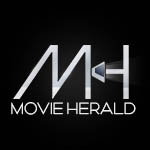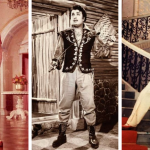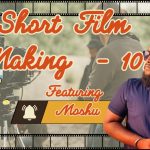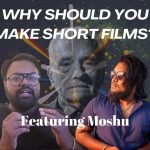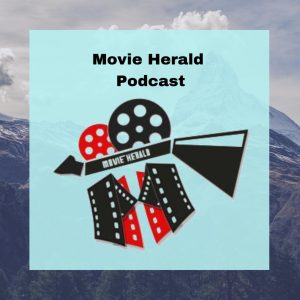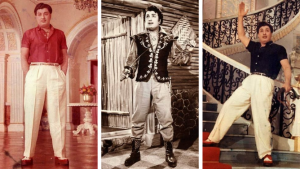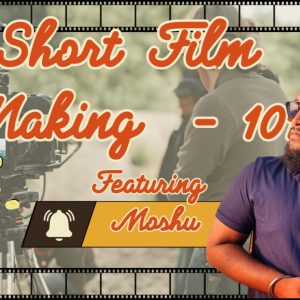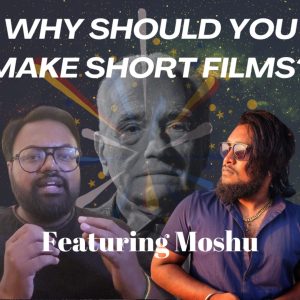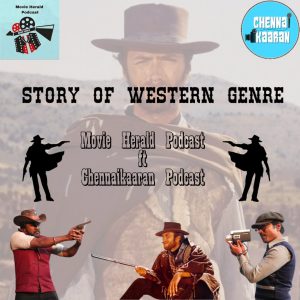The First Genre Movie Ever Made – Genre Series – Ep 2 | Movie Herald Podcast
Welcome back, film fanatics, to another episode of Movie Herald Podcast. Last time, we cracked open the treasure chest of movie genres, but today, we're taking a time machine and teleporting to the very birth of the genre system. Buckle up, because we're about to witness the first flick that dared to wear its genre on its sleeve!
Brace yourselves, folks, because we're going all the way back to 1902. That's right, we're talking about a time when cars were horseless carriages and cellphones were just a twinkle in Alexander Graham Bell's eye. This is the era of silent films, where storytelling relied on slapstick, pantomime, and a dash of imagination from the audience.
So, what film gets the honor of being the first “genre film”? Many film historians point to a French flick called “Le Voyage dans la Lune,” which translates to “A Trip to the Moon.” Yes, the same directed by George Melies from Hugo. This fantastical journey follows a group of astronomers who blast off to the moon in a giant cannon. Think Jules Verne meets Monty Python, with a healthy dose of silent film charm.
Now, “A Trip to the Moon” wasn't exactly “The Godfather” of its time, but it planted a seed. It showed filmmakers that audiences craved stories that fit into specific categories – in this case, the fantastical world of science fiction.
After this lunar launch, other genres started popping up like popcorn at the cinema. Westerns, comedies, and even tearjerking melodramas emerged, each catering to a specific audience appetite.
What was the very first genre film in Hollywood? Drumroll, please… It was none other than the iconic Western, “The Great Train Robbery,” released in 1903. Directed by Edwin S. Porter, this 12-minute silent film revolutionized storytelling on screen. It had action, drama, and even a touch of suspense – all essential elements of the Western genre.
But hold your horses, pardner! “The Great Train Robbery” wasn’t just a standalone success. It kickstarted a wildfire of genre films, each adding its own unique flavor to the mix. From the swashbuckling adventures of Douglas Fairbanks in “The Mark of Zorro” to the spine-chilling horrors of “Dr. Jekyll and Mr. Hyde,” Hollywood was quickly becoming a melting pot of genres.
Now, let’s talk turkey. How did the success of these early genre films change the movie market? Well, it was like adding fuel to the fire. Audiences couldn’t get enough of the thrills and excitement offered by these genre flicks, and filmmakers were more than happy to deliver. Studios began churning out genre films left and right, each vying for a piece of the box office pie.
But amidst all the chaos, one thing became clear – genre films weren’t just a passing fad. They had staying power. Directors like John Ford and Alfred Hitchcock elevated genre filmmaking to an art form, pushing the boundaries of storytelling and leaving audiences on the edge of their seats.
This genre gold rush wasn't just about making money (although that certainly didn't hurt). It also allowed filmmakers to explore different storytelling techniques and create a kind of cinematic shorthand. If you saw a cowboy hat and a dusty town, you knew you were in for a Western. A damsel in distress and a mustache-twirling villain? You were probably watching a melodrama.
Now, the success of these early genre films did have its drawbacks. Some critics argued that it stifled creativity and led to formulaic storytelling. But hey, you can't please everyone, right?
So in the next episode, we will see in detail about the Western Genre. Exciting isn’t it?
Until then bye from Gopal.
Author Profile
Latest Articles
 Podcast2024.07.08#115 – Hidden themes and messages in Kalki 2898 AD
Podcast2024.07.08#115 – Hidden themes and messages in Kalki 2898 AD Podcast2024.05.30#114 – What is Guerilla Filmmaking ft. Sourabh Shukla & Pradeep | Movie Herald Podcast
Podcast2024.05.30#114 – What is Guerilla Filmmaking ft. Sourabh Shukla & Pradeep | Movie Herald Podcast Podcast2024.04.11113 – How to make a Short Film like a Pro ft. Moshu
Podcast2024.04.11113 – How to make a Short Film like a Pro ft. Moshu Podcast2024.04.08112 – Why should you make a short Film ft. Moshu | Movie Herald Podcast
Podcast2024.04.08112 – Why should you make a short Film ft. Moshu | Movie Herald Podcast
